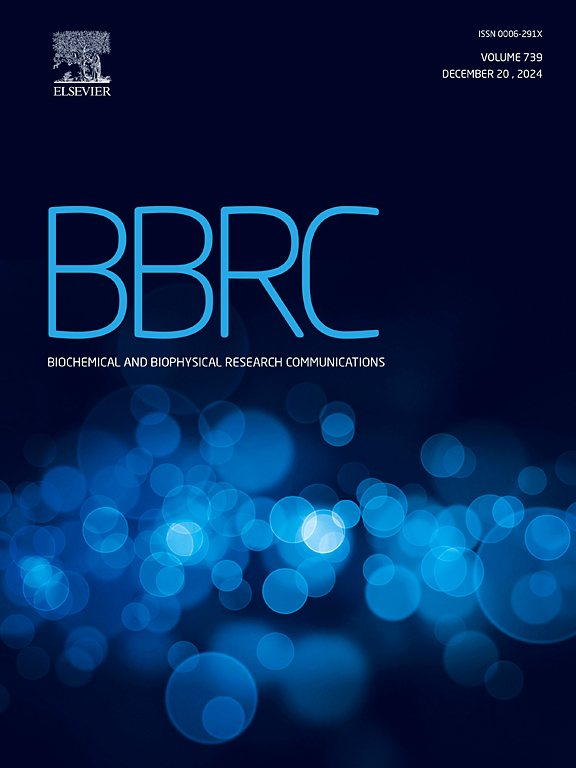PINK1 link mitochondria-ER contacts controls deposition of intramuscular fat in pigs
IF 2.5
3区 生物学
Q3 BIOCHEMISTRY & MOLECULAR BIOLOGY
Biochemical and biophysical research communications
Pub Date : 2025-03-21
DOI:10.1016/j.bbrc.2025.151672
引用次数: 0
Abstract
Intramuscular fat (IMF) is a key determinant of meat quality in pigs, influencing characteristics such as tenderness, flavor, and marbling. The regulation of IMF deposition involves complex metabolic processes, with mitochondrial function playing a central role. PTEN-induced kinase 1 (PINK1), a protein involved in mitophagy and mitochondrial quality control, has recently been implicated in regulating fat deposition, although its role in IMF deposition in pigs remains unclear. This study investigates how PINK1 regulates IMF deposition by modulating mitochondrial-endoplasmic reticulum (ER) interactions. We utilized single-cell RNA sequencing to demonstrate that PINK1 is predominantly expressed in fibro-adipogenic progenitors (FAPs) and adipocytes, and its expression is negatively correlated with IMF content in multiple pig breeds. Knockdown of PINK1 in vivo led to increased intramuscular triglyceride content and enhanced adipogenic differentiation in primary porcine IMF cells. Additionally, PINK1 depletion resulted in impaired mitochondrial respiration, increased mitochondrial biogenesis, and disruption of mitochondria-ER contacts, further suggesting that PINK1 mediated of mitochondrial function and communication between mitochondria and ER is essential for controlling lipid deposition. These findings provide novel insights into the molecular mechanisms governing IMF accumulation and highlight PINK1 as a potential target for manipulating fat deposition in both agricultural and biomedical contexts.
求助全文
约1分钟内获得全文
求助全文
来源期刊
CiteScore
6.10
自引率
0.00%
发文量
1400
审稿时长
14 days
期刊介绍:
Biochemical and Biophysical Research Communications is the premier international journal devoted to the very rapid dissemination of timely and significant experimental results in diverse fields of biological research. The development of the "Breakthroughs and Views" section brings the minireview format to the journal, and issues often contain collections of special interest manuscripts. BBRC is published weekly (52 issues/year).Research Areas now include: Biochemistry; biophysics; cell biology; developmental biology; immunology
; molecular biology; neurobiology; plant biology and proteomics

 求助内容:
求助内容: 应助结果提醒方式:
应助结果提醒方式:


